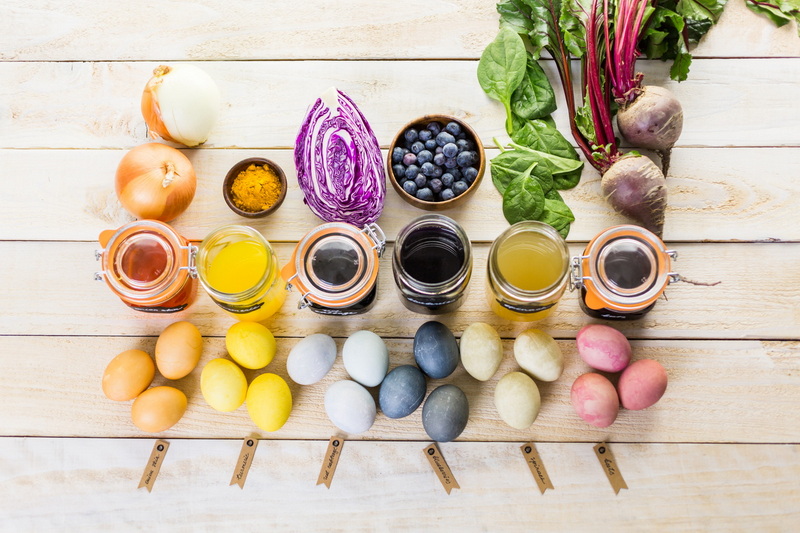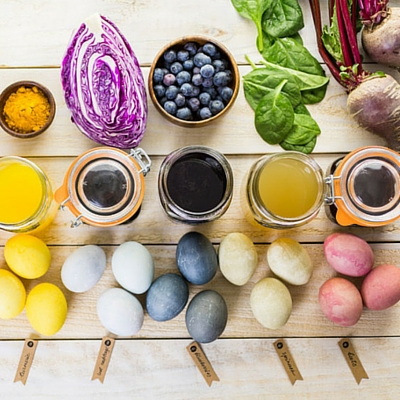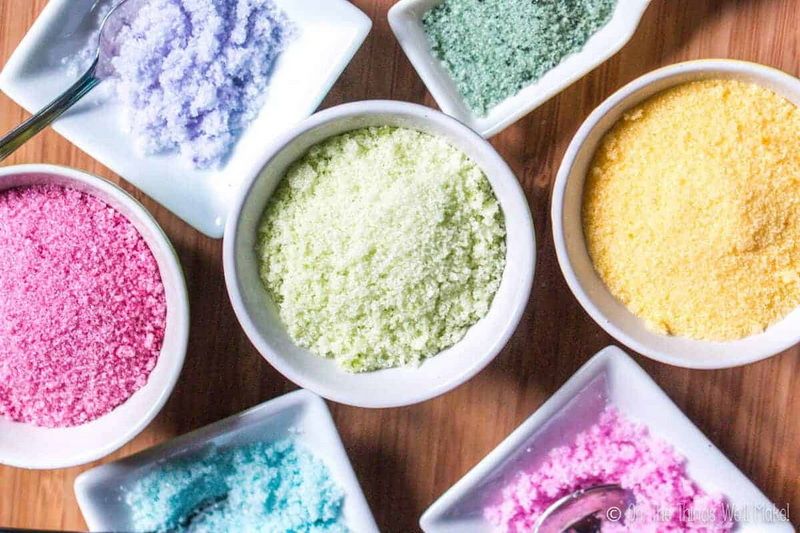Content Menu
● Overview of the Natural Food Colors Industry in Quebec City
● Why Choose Natural Food Colors?
>> Health and Safety
>> Clean Label and Transparency
>> Regulatory Compliance
>> Sustainability
● Leading Natural Food Colors Manufacturers and Suppliers in Quebec City
>> Robertet Canada
>> Calico Food Ingredients
>> Sensient Food Colors
>> Sun Food Tech
>> Oterra
>> Kalsec
● Production Process: From Farm to Food
>> Step-by-Step Production Process
● Key Applications and Innovations
● Regulatory Environment and Quality Standards
● Market Trends and Consumer Preferences
● Challenges and Opportunities
>> Challenges
>> Opportunities
● Conclusion
● FAQ
>> 1. What are the main advantages of using natural food colors?
>> 2. Which companies are leading natural food colors manufacturers and suppliers in Quebec City?
>> 3. What raw materials are commonly used for natural food colorants?
>> 4. How do manufacturers ensure the stability and safety of natural food colors?
>> 5. What trends are shaping the future of natural food colors in Quebec City?
The demand for clean-label, vibrant, and naturally derived food colorants is transforming the food industry in Quebec City and beyond. As consumers become more health-conscious and regulatory standards tighten, the role of Natural Food Colors Manufacturers and Suppliers has never been more crucial. This comprehensive guide explores the leading companies, market trends, production processes, and the future outlook for natural food colorants in Quebec City. Whether you are a brand owner, wholesaler, or manufacturer seeking OEM services, this article offers deep insights and practical knowledge for navigating this dynamic sector.

Overview of the Natural Food Colors Industry in Quebec City
Quebec City stands at the forefront of the Canadian food processing industry, with a vibrant ecosystem of manufacturers and suppliers specializing in natural food colorants. The region's robust agricultural base, advanced processing facilities, and proximity to major North American markets make it an ideal hub for companies dedicated to plant-based and clean-label ingredients.
Natural food colors are derived from fruits, vegetables, algae, and other botanical sources. They are used to enhance the visual appeal of food and beverages while meeting consumer expectations for safety and transparency. In recent years, the market share of natural colorants has grown rapidly, driven by shifts in consumer preferences and stricter regulations on synthetic additives.
Why Choose Natural Food Colors?
Health and Safety
Natural food colorants are considered safer alternatives to synthetic dyes, which are often associated with health concerns. Derived from edible sources like beets, turmeric, and spirulina, these colorants are free from petroleum-based chemicals and artificial additives.
Clean Label and Transparency
Modern consumers are increasingly seeking products with short, understandable ingredient lists. Natural food colors fit perfectly into this trend, allowing manufacturers to market their products as clean-label and free from artificial ingredients.
Regulatory Compliance
Canadian regulations are among the strictest globally when it comes to food additives. Using natural food colorants helps manufacturers comply with evolving standards and avoid the risks associated with banned or restricted synthetic dyes.
Sustainability
Natural food colors are often produced through environmentally friendly processes, utilizing renewable resources and minimizing waste. This aligns with the growing emphasis on sustainability in the food industry.
Leading Natural Food Colors Manufacturers and Suppliers in Quebec City
Robertet Canada
Robertet Canada is a prominent player in the natural food colors sector, offering a diverse range of plant-based color extracts tailored for various applications. Their portfolio includes annatto, paprika, beta-carotene, and innovative blends designed for bakery, dairy, snack, and meat products.
Calico Food Ingredients
Calico Food Ingredients collaborates with global partners to supply high-quality natural colors, flavors, vitamins, and coatings. Their technical team specializes in custom formulations to meet specific client needs, ensuring consistency and vibrant results.
Sensient Food Colors
Sensient is a multinational leader with a significant presence in Quebec City. The company invests heavily in research and development to improve the stability, color strength, and cost-effectiveness of natural food colorants, helping manufacturers transition from synthetic to natural solutions.
Sun Food Tech
Sun Food Tech is known for its innovative approach to natural food coloring, supplying a wide range of plant-based colorants for the food and confectionery industries. Their commitment to quality and sustainability has earned them recognition across Canada.
Oterra
Oterra is recognized as one of the world's largest suppliers of natural food colors, offering a comprehensive portfolio of solutions for every food application. Their expertise ensures reliable supply and technical support for manufacturers in Quebec City.
Kalsec
Kalsec delivers a rainbow of natural colors derived from fruits, vegetables, and botanicals. Their proprietary extraction technologies ensure high stability and vibrant hues suitable for a wide range of food and beverage products.

Production Process: From Farm to Food
The journey of natural food colorants begins with the careful selection of raw materials. Key sources include beets, turmeric, spirulina, annatto seeds, red cabbage, spinach, and butterfly pea flower. Each source offers unique pigments that can be extracted and refined for use in food manufacturing.
Step-by-Step Production Process
1. Sourcing and Harvesting: High-pigment crops are cultivated and harvested at peak ripeness.
2. Preparation: Raw materials are cleaned, dried, and prepped to ensure purity and color consistency.
3. Extraction: Pigments are extracted using water, oil, or solvent-based methods, depending on the source.
4. Purification: Extracted colors are filtered to remove impurities and concentrated for stability.
5. Stabilization: Techniques such as pH adjustment, encapsulation, and the addition of antioxidants ensure the color remains vibrant and stable during processing and storage.
6. Testing: Each batch undergoes rigorous testing for purity, microbial safety, and color strength.
7. Packaging and Distribution: Finished colorants are packaged in liquid, powder, or gel form and distributed to manufacturers.
Key Applications and Innovations
Natural food colorants are used across a variety of food sectors:
- Bakery and Confectionery: Enhance the appeal of cakes, pastries, and candies.
- Dairy and Frozen Products: Provide vibrant hues for yogurts, ice creams, and cheeses.
- Beverages: Used in juices, soft drinks, and functional beverages for natural color enhancement.
- Meat, Poultry, and Seafood: Improve the appearance of processed meats and seafood products.
- Snacks and Ready-to-Eat Foods: Add visual appeal to chips, coatings, and prepared meals.
Innovations in extraction and stabilization technologies are enabling manufacturers to achieve brighter, more stable colors that withstand processing challenges such as heat, light, and pH variations. For example, microencapsulation techniques protect sensitive pigments from degradation, allowing natural colors to maintain their vibrancy even in harsh processing environments. Additionally, the development of water-soluble and oil-soluble natural colorants has expanded their versatility across different food matrices.
Regulatory Environment and Quality Standards
Canadian regulations require food manufacturers to list colorants by their specific names and ensure full transparency in labeling. The Canadian Food Inspection Agency (CFIA) enforces strict standards for food additives, pushing manufacturers to adopt natural alternatives and invest in quality control.
Compliance with these regulations not only ensures product safety but also enhances consumer trust and brand reputation. Manufacturers must also adhere to international standards such as those set by the Codex Alimentarius to facilitate export opportunities. Quality certifications like ISO 22000 and HACCP are commonly pursued by natural food colors manufacturers to demonstrate their commitment to food safety and quality management.
Market Trends and Consumer Preferences
The Canadian market for food colorants is experiencing a significant shift toward natural solutions. While synthetic colorants still hold a majority share, natural colorants are rapidly gaining ground, driven by consumer demand for clean-label products and growing awareness of health and environmental issues.
The bakery, meat, and beverage sectors are leading the adoption of natural food colorants, with ongoing innovation focused on improving color stability and expanding the range of available hues. Furthermore, there is an increasing interest in exotic and novel natural colors derived from lesser-known botanicals, which offer unique shades and functional benefits.
Consumers also show a preference for products that not only look appealing but also offer added nutritional value. This has encouraged manufacturers to explore colorants that double as antioxidants or sources of vitamins, such as carotenoids and anthocyanins.
Challenges and Opportunities
Challenges
- Cost: Natural food colorants are often more expensive than synthetic alternatives due to sourcing and processing complexities.
- Stability: Maintaining color vibrancy through processing and storage can be challenging.
- Supply Chain: Fluctuations in raw material availability can impact production and pricing.
- Technical Limitations: Some natural colors may have limited pH or temperature stability, restricting their use in certain products.
Opportunities
- Innovation: Advances in extraction and stabilization technologies are making natural colorants more competitive.
- Sustainability: Growing demand for eco-friendly and ethically sourced ingredients.
- Market Expansion: Rising consumer demand for clean-label products creates new opportunities for manufacturers and suppliers.
- Customization: OEM services allow brands to develop unique color blends tailored to specific product needs, enhancing differentiation.
- Collaborations: Partnerships between ingredient suppliers and food manufacturers foster innovation and faster market adoption.
Conclusion
Natural food colors are revolutionizing the food industry in Quebec City, providing safe, sustainable, and visually appealing alternatives to synthetic dyes. The region's leading manufacturers and suppliers are at the cutting edge of innovation, driven by consumer demand for clean-label products and strict regulatory standards. By embracing natural food colorants, brands can enhance product appeal, ensure compliance, and contribute to a healthier, more sustainable food system. The ongoing advancements in technology and growing market acceptance promise a vibrant future for natural food colors in Quebec City and beyond.

FAQ
1. What are the main advantages of using natural food colors?
Natural food colors offer health and safety benefits, align with clean-label trends, comply with strict regulations, and support sustainability initiatives. They are derived from edible sources and free from artificial chemicals.
2. Which companies are leading natural food colors manufacturers and suppliers in Quebec City?
Key players include Robertet Canada, Calico Food Ingredients, Sensient Food Colors, Sun Food Tech, Oterra, and Kalsec. These companies provide a wide range of plant-based colorants and technical expertise for various food applications.
3. What raw materials are commonly used for natural food colorants?
Common sources include beets, turmeric, spirulina, annatto seeds, red cabbage, spinach, and butterfly pea flower. Each offers unique pigments for different color needs.
4. How do manufacturers ensure the stability and safety of natural food colors?
Manufacturers use advanced extraction, purification, and stabilization techniques, including pH adjustment, encapsulation, and antioxidants. Rigorous testing ensures purity, microbial safety, and color strength.
5. What trends are shaping the future of natural food colors in Quebec City?
Growing consumer demand for clean-label and sustainable products, ongoing regulatory changes, and advances in color extraction and stabilization are driving the rapid adoption of natural food colorants.

 English
English 




























